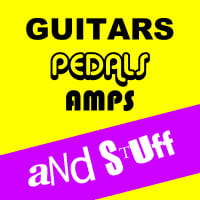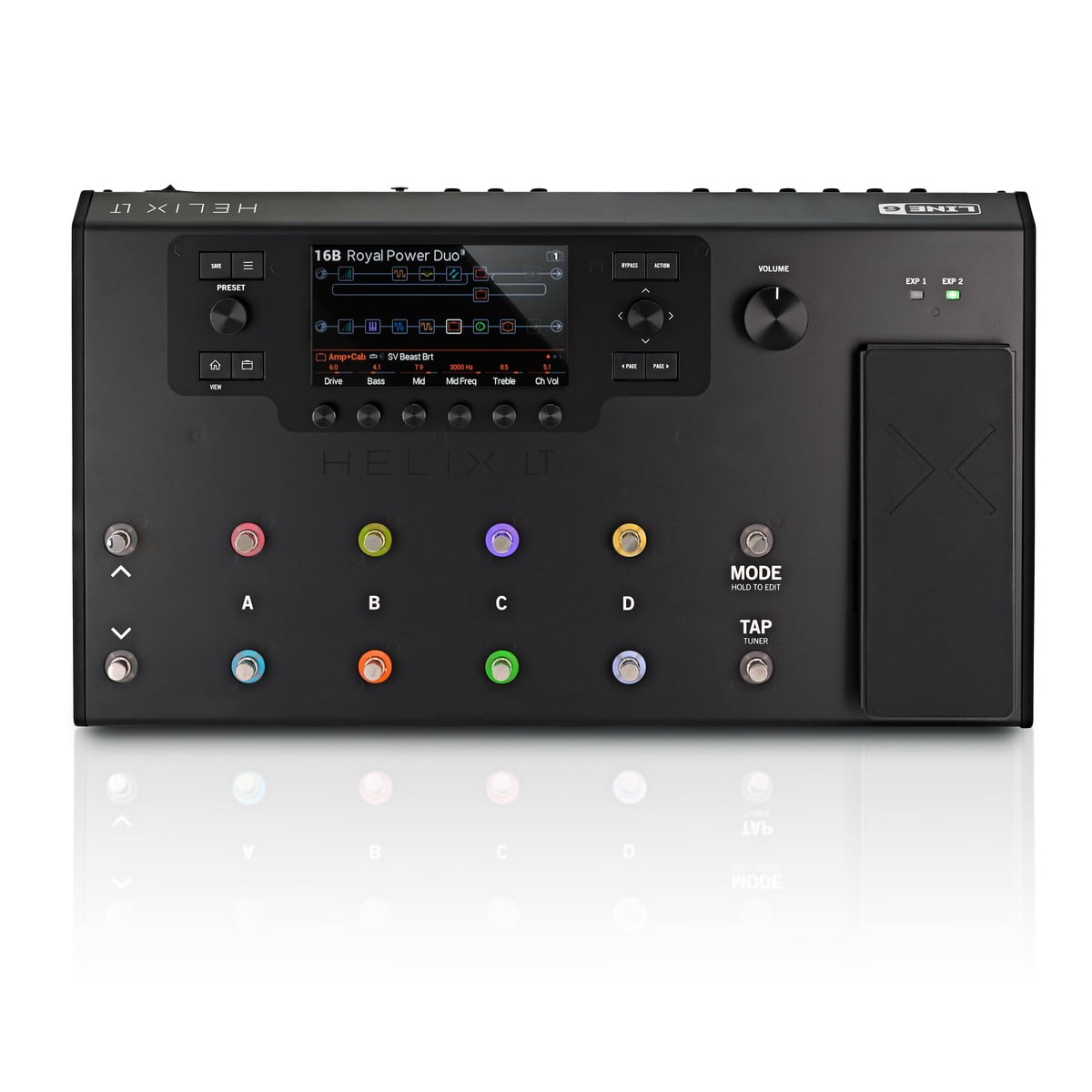
Multi guitar effects, also known as multi-effects processors or pedals, are comprehensive units designed to provide a wide array of guitar effects within a single device. These units consolidate various effects like distortion, modulation, delay, reverb, and more into one convenient package. They offer a diverse range of sounds and functionalities, allowing guitarists to access multiple effects without the need for individual pedals.
Components and Features
Effect Types:
Multi-effects units encompass a plethora of effects, typically including distortions, overdrives, modulation effects (chorus, flanger, phaser), delay, reverb, EQ, amp modelling, cabinet simulation, and often extras like expression pedals or built-in tuners.
Signal Chain and Presets:
They allow users to arrange effects in a particular order (signal chain) according to their preference. Additionally, many models provide preset configurations, enabling easy access to saved combinations of effects for quick switching during performances.
Interface and Controls:
These units feature intuitive interfaces, often with LCD screens and knobs or buttons, allowing users to tweak parameters and settings for each effect. Some high-end models offer advanced editing capabilities via software, enabling deep customization of sounds.
Connectivity:
Multi-effects processors typically have inputs for guitars, outputs for amplifiers or mixers, and sometimes MIDI connections for synchronization or control purposes. They also come with USB ports for firmware updates, editing software access, or direct recording capabilities.
Advantages
Space and Portability:
They significantly reduce the need for multiple individual pedals, saving space on pedalboards and making transportation more convenient.
Versatility and Cost-Effectiveness:
They offer a vast array of effects in one unit, making them cost-effective compared to purchasing several individual pedals. Additionally, they provide versatility, allowing guitarists to experiment with different sounds and effects without investing in numerous pedals.
Live Performance and Recording:
Multi-effects units are ideal for live performances, enabling guitarists to access various sounds and effects seamlessly during a show. They’re also great for direct recording into audio interfaces or mixers.
Things to Consider about Multi Effect Units
Sound Quality:
While technological advancements have improved sound quality, some purists argue that individual pedals may provide more refined and authentic tones for specific effects.
User Interface and Complexity:
The complexity of navigating through various effects and parameters might be overwhelming for some users. However, many units strive to provide user-friendly interfaces and intuitive controls.
Personal Preference:
Musical preferences and playing styles may influence whether a multi-effects unit suits a guitarist’s needs. Some musicians prefer the hands-on, specific control that individual pedals offer.
Notable Brands and Models
Boss GT Series:
Boss GT pedals are renowned for their durability and comprehensive range of effects, offering extensive flexibility and sound quality.
Line 6 Helix Series:
Line 6 Helix units are known for their amp and cabinet modeling, providing an expansive palette of tones for both live and studio applications.
TC Electronic Nova System:
The Nova System combines analog drive circuits with digital effects, offering a balance between analog warmth and digital flexibility.
Conclusion
Multi guitar effects processors are versatile, all-in-one solutions catering to a wide spectrum of guitarists, from beginners seeking exploration to professionals needing a compact and adaptable setup. While they offer convenience, sound quality, personal preference, and the specific needs of a musician’s playing style remain crucial factors when considering the adoption of multi-effects units in their rig. Ultimately, the choice between individual pedals and multi-effects units depends on the guitarist’s priorities, playing requirements, and sonic preferences.

